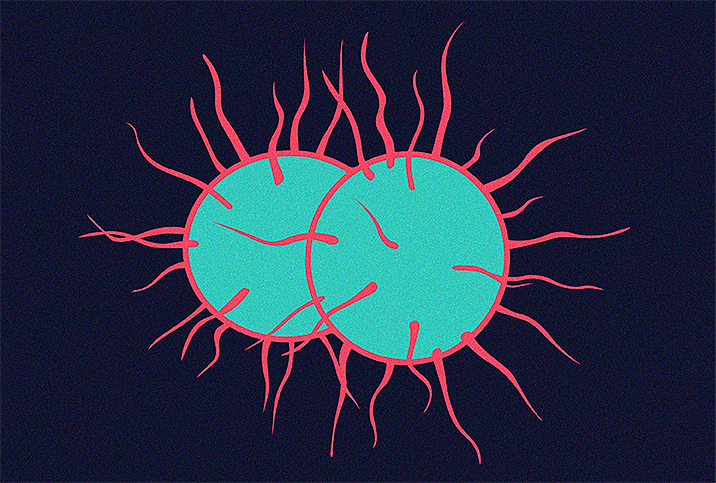Gonorrhea Can Affect Many Areas of Your Body

Gonorrhea is an infection caused by the Neisseria gonorrhoeae bacterium. Shared through sexual activity, this common sexually transmitted disease (STD) affects both men and women, with 580,405 cases reported in 2018 in the United States, according to the Centers for Disease Control and Prevention (CDC). That was a 63 percent increase from 2014.
While gonorrhea is known to affect the genital region, it can actually affect other areas of the body, including the rectum, throat, joints and eyes. The gonorrhea bacterium tends to target warm and moist areas of the body.
Gonorrhea is almost always transmitted through contact with an infected body part during vaginal, anal or oral sex. This means you can spread gonorrhea even when no semen or blood is exchanged during sex.
Rectum
Gonorrhea can infect your anus and rectum (the final section of the large intestine) if you have anal sex. It can even spread from the anus to another part of your body, such as when wiping after using the bathroom.
While often asymptomatic, anal and rectal gonorrhea signs and symptoms may include anal itching, constipation, painful bowel movements, bleeding from the rectum, or a green or pus-like discharge.
Throat
Oral or throat gonorrhea can be contracted through oral sex with someone who has gonorrhea. While research on the subject is limited, there are case reports of oral gonorrhea transmission through kissing. Tongue kissing, in particular, appears to increase the risk. Signs and symptoms to look for include sore throat, redness in the throat, fever and swollen lymph nodes in the neck.
A sore throat is the primary symptom of oral gonorrhea, but up to 90 percent of people infected with oral gonorrhea exhibit few or no symptoms.
Eyes
In rare cases, gonorrhea can be transmitted to an eye if it comes in contact with infected bodily fluids. Gonorrhea in the eyes can occur in a number of ways, including:
-
An infected person ejaculates in or around their sexual partner's eyes.
-
An individual touches their eyes after coming in contact with infected semen, urine or vaginal fluid.
-
A newborn baby contacts the bacteria in the birth canal.
If a pregnant woman is infected with gonorrhea, the bacteria could spread to the eyes of the fetus during birth. This can lead to conjunctivitis in the newborn. However, an infection is usually prevented because all babies are treated with medicated eye ointment after delivery.
Signs and symptoms of gonorrhea in the eyes include redness, pain or swelling in or around the eyes; light sensitivity; difficulty opening your eyes; or a discharge from the eye that may be green, white or yellow and usually forms a crust over the eye.
Joints
Gonococcal arthritis is a form of septic arthritis, or a painful infection in the joint. This type of arthritis tends to affect women more than it does men.
Someone with gonococcal arthritis may experience typical gonorrhea symptoms—pain when urinating or a pus-like discharge, for example—but as with gonorrhea found in other areas of the body, many women and men will not experience any genital symptoms. The hands may be the telling appendage. Small red bumps or pustules on the palms can be a sign of gonococcal arthritis.
Gonococcal arthritis can affect many joints or a single joint and is most commonly found in knees, elbows, wrists and ankles. Symptoms of gonorrhea in the joints may include pain, redness, swelling or restricted motion in the joints; in addition, look for chills, fever, skin lesions or a burning sensation during urination.
If you have any of these symptoms, you should see your doctor and get tested for gonorrhea. Fortunately, gonorrhea is highly treatable. Most likely, you will be prescribed antibiotics and should feel relief within days.


















